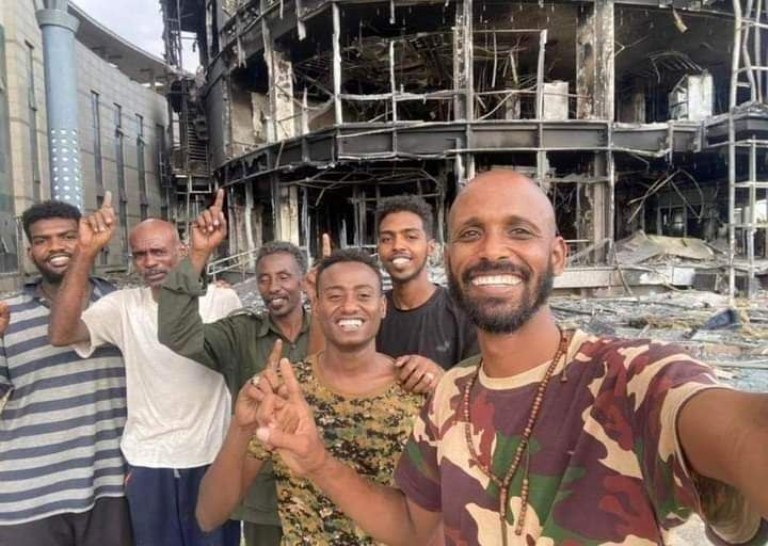
Sudanese soldiers in front of the Nile Company Tower in the Muqran area on October 7, 2024.
October 7, 2024 ( KHARTOUM) – The Rapid Support Forces (RSF) has begun withdrawing from the East Nile district of Khartoum state as the Sudanese Army launched its first major ground offensive to retake control of the capital, Khartoum. Both sides are reportedly massing troops in Khartoum North, anticipating a decisive battle for control of the area.
Since the outbreak of hostilities in mid-April 2023, the RSF has held central Khartoum and much of Khartoum Bahri. Elite RSF units, equipped with sophisticated weaponry, have been heavily entrenched in East Nile since capturing the district in the war’s initial weeks.
However, witnesses in East Nile told Sudan Tribune that RSF’s presence in the area’s streets, markets, and cafes has dwindled significantly. They also reported a sharp increase in airstrikes by the Sudanese Air Force targeting RSF positions.
The army’s ground operation, launched on September 26, marks its first significant attempt to retake Khartoum, aside from a brief operation in March to secure the state broadcasting headquarters and neighbourhoods in Old Omdurman.
A previous limited offensive in late May to dislodge the RSF from the Halfaya Bridge, linking northern Omdurman to northern Khartoum Bahri, ended in defeat for the army.
But since last week, the army has advanced in the Muqran area, crossing the White Nile bridges from Omdurman and into Khartoum Bahri via the Halfaya Bridge. They have seized control of the Kadru, Halfaya, and Al-Izayrkab areas in northern Khartoum Bahri.
Heavy fighting continues in the Muqran area, with both sides exchanging sniper fire from high-rise buildings. The army aims to break the siege of its headquarters at the General Command in central Khartoum by pushing south from Halfaya to the Signal Corps base in southern Khartoum Bahri, near the besieged command centre.
In East Nile, residents have observed convoys of small vehicles and the departure of families of RSF fighters. In recent weeks, the RSF military police have conducted intensive roundups of fighters, apparently to redeploy them to other fronts. According to Sudan Tribune sources, many RSF fighters have gone into hiding to avoid these forced redeployments.
Meanwhile, witnesses in Khartoum Bahri described a large-scale mobilization of RSF forces in the Al-Mazad neighbourhood in the north. The RSF has also ordered residents to evacuate the old neighbourhoods of Hilat Hamad, Hilat Khogali, and Al-Danaqla and has deployed artillery in those areas.
These neighbourhoods are adjacent to the Republican Palace on the west bank of the Nile in Khartoum and Tuti Island, which overlooks the Muqran area where intense fighting is now concentrated.
The army has deployed reinforcements from northern Omdurman to Halfaya and the Kadru military zone in northern Khartoum Bahri, signalling an impending confrontation for control of Khartoum Bahri.
A successful advance into central and southern Khartoum Bahri would allow the army to link up with the Signal Corps base and relieve the siege of the General Command. It would also tighten the noose around RSF forces at the Khartoum refinery, a strategic site about 70 kilometres north of the capital held by the RSF since the war began.
On another front, the army launched a combined ground and air offensive last Tuesday in Jabal Moya, west of the city of Sennar. This strategic area lies on the main highway linking Sennar, Al Jazirah, and White Nile states.
After two days of fighting, the Sovereign Council announced that the Sennar-Rabak road, which runs through Jabal Moya, had been reopened. Control of Jabal Moya is crucial, as it serves as a vital link between Sennar and Rabak and is adjacent to Al Jazirah state. If the army secures Jabal Moya, it will sever a key RSF supply line connecting Madani, Jabal Moya, and Sinjah of Sennar state.
